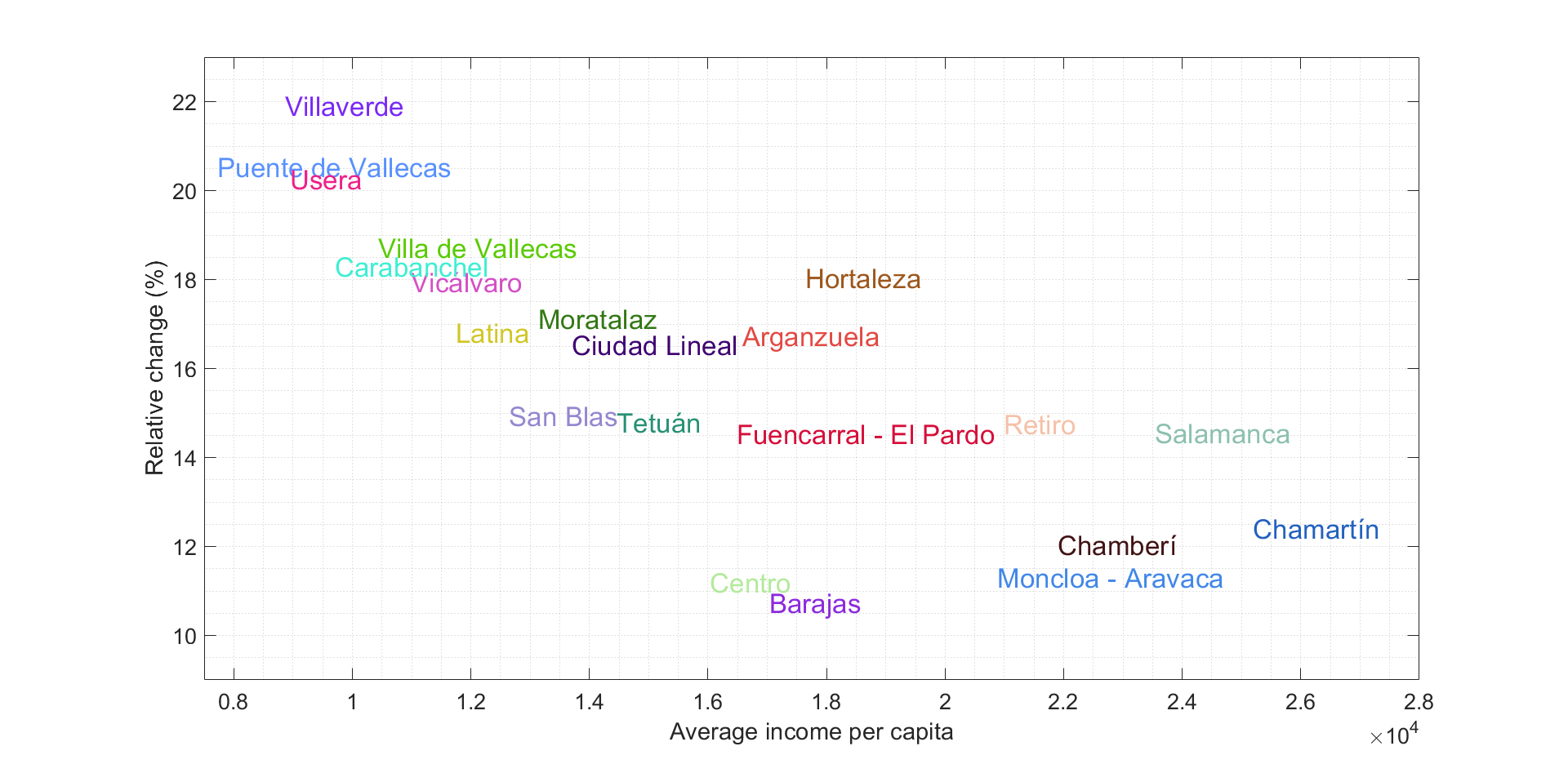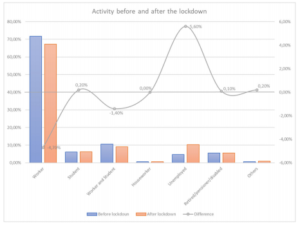This research was carried out and written by Rubén Fernández Pozo, Mark Richard Wilby, Juan José Vinagre Díaz and Ana Belén Rodríguez González from the GB2S-Grupo de Biometría, Bioseñales, Seguridad y Smart Mobility research group.
Background
COVID-19 is changing the travel behavior and disrupting the public transport demand throughout the world. We present a data-driven analysis of the impact of COVID-19 on public transport demand in the Community of Madrid, using data from validations between February and September 2020.
Data and Methodology
Our study is based on real ticket entries registered by the Smart Card Data (SCD) system operating in every transport mode (subway, commuter train, buses, etc.) in the whole region. In total, more than 430 million of validations. We perform an extensive analysis of ridership changes for different transport modes, ticket types and groups of users. In this work, we also analyze average daily patterns of public transit demand during each phase of the pandemic in Madrid. Finally, we investigate the evolution of demand per district, where socioeconomic factors related with specific zones can determine changes in public transport utilization.
Results and Conclusions
We find that ridership has dramatically decreased by almost 95 % at the pandemic peak in the period of economic “hibernation”, recovering very slowly and reaching only half its pre-pandemic levels at the end of September. Among the different public transport modes, commuter trains show the greatest demand in COVID-19 times, due to the fewer transport alternatives that long-distance travelers have. The obtained results also display distinct average daily patterns of public transit demand during the different stages of pandemic. Finally, the most relevant conclusion is that reduced fare tickets for vulnerable and low-income groups have suffered lowest decreases, providing evidence that groups with low socioeconomic status are particularly reliant on public transport. This finding is supported by a spatial analysis of the 21 districts of Madrid Capital, which shows a high correlation between income levels and drop in ridership. All these conclusions provide relevant information for transit agencies to design responses to an emergence situation like this pandemic, contributing to extend the global knowledge about COVID- 19 impact on transport comparing results with other cities worldwide.




